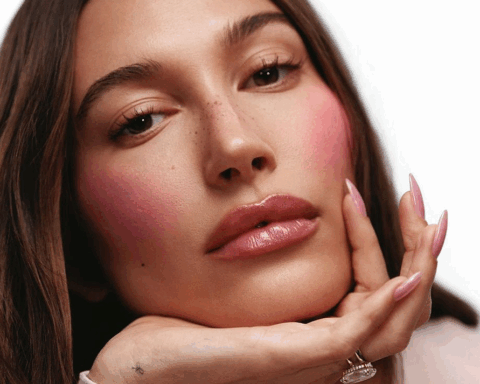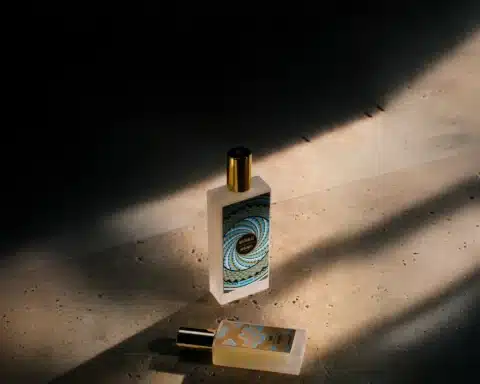Every summer, Italy and its acute sense of elegance offer an exceptional playground for designers and creators from all over the world. Transalpine femininity, with its blend of glamour, casualness and joviality, is all the more accessible, as a simple black or red dress matched with the right accessory is all it takes to follow in the footsteps of the greatest actresses of Cinecitta.
There’s something timeless about the Dolce Vita style.
This summer style for men and women, envied beyond its transalpine borders, became exceptionally popular on the threshold of the 1960s. This period coincided with the release of Federico Fellini ‘s moral fable of the same name, which was condemned by the Vatican. Since the mythical scene of Anita Ekberg, wearing a Valentino’s little black dress, immersing herself barefoot in the Trevi Fountain, it was now the turn of the Italians, a few years after the Frenchwoman Gabrielle Chanel, toassociate this hue not only with mourning and religiosity, but now also with wild nocturnal jaunts through the sleepy streets of the Eternal City.
The Dolce Vita style in solid colors, at once sexy, simple and elegant, was officially born.
Elegance from head to toe
“I’m Monica Vitti” exclaims actress Jennifer Coolidge (aka Tanya McQuoid-Hunt) in season 2 of the hit series The White Lotus. The heroine offers a condensed version of Dolce Vita style: printed silk day dress , matching babushka scarf and huge sunglasses, topped off with a pink Valentino bag, the emblem of made in Italy.
This Dolce Vita style blends in with the history of post-war Italian fashion, that of an Italian woman seeking the right balance between being desirable without being too flirtatious, opening up to the world while defending her cultural singularity. The resulting silhouettes are, in essence, nostalgic for a certain golden age, reminiscent of the period known as “Hollywood on the Tiber“, when the greatest American film studios were infatuated with the ancient ruins offered by the city of Rome to shoot peplums and other mega-productions.
In fact, the style rendered on screen in the Dolce Vita film is very much imbued with the dress codes inherited from the 1950s. For example, the little black dress worn by Anita Ekberg in La Dolce Vita owes a great deal to the 1957 bag dress designed by Spaniard Cristobal Balenciaga, who, in the words of the Italian filmmaker, “made beautiful a woman who could be a skeleton of misery and solitude inside.”
Indeed, if the Italian woman places so much importance on her looks and matching accessories, this second-skin reflex derives from the 1930s. At that time, clothing was still a means of social identification. At that time, clothing still served as a social marker. Plain-colored, more or less elaborate outfits helped to erase social differences as far as possible and confer a certain dignity in society.
While Paris remains a fashion mecca, indissociable from names such as Chanel and Céline, workshops that became major players in this sector, created respectively in 1910 and 1945, Italy has no reason to be ashamed of its fashion scene – quite the contrary.
The sartorial refinement inherent in the Dolce Vita style goes hand in hand with a certain transalpine art de vivre born in 1951, when a certain Giovanni Battista Giorgini began exporting Italian creations to the United States. Spurred on by a healthy rivalry with French couture, he was the first to promote Made in Italy, an acronym that has acquired its letters of nobility in leatherwork (shoes and leather goods). To set itself apart from its French rival, Italian fashion has opted for a certain sobriety in its lines, for ready-to-wear of superior quality but designed for everyday life.
Inspiration for Italian chic
From transalpine style icons Sophia Loren, Monica Vitti and Monica Bellucci to the more “international” Anouk Aimée and Jacky Kennedy (Onassis period), we now know that a few basics are all it takes to sport a silhouette as polished as it is feminine, characteristic of the Dolce Vita style. This style is characterized by impeccable tailoring and solid colors, in particular the Sicilian duo of red and black, as demonstrated by this Valentino selection, representative of luxury ready-to-wear. The great variety of fabrics (lace, silk…) and the know-how of Italian craftsmen sublimate these garments designed to last without going out of style. In fact, some vintage models are still among the best-selling classics today.
Creativity and imagination, however, are an integral part of collections from Italy, or imagined by transalpine designers such as Valentino Garavani, who have established themselves in Paris. Inspired by his favorite color, orange-red, to which he has remained faithful since his beginnings in the City of Light and Rome in 1960, this fashion artist has managed to renew himself. Retired in 2008, the founder handed over the reins of his fashion house to Alessandra Facchinetti for two seasons, before welcoming Maria Grazia Chiuri (now with Dior) and Pierpaolo Piccoli. The latter became sole master on board in 2016, before handing over to Alessandro Michele, previously at Gucci, in March.
In addition to spectacular dresses and designer pieces for everyday wear, the big names in Italian luxury are also known for signing beautiful accessory collections every season. The Dolce Vita style is characterized by the use of “cat’s eye” or “fly” sunglasses and, inevitably, a silk scarf, worn casually around the neck or as a kerchief to sniff the air aboard a roaring vespa. The finishing touch to a flawless look, a woman’s handbag stands out and deserves special attention. In grained calf leather or raffia, with their specific logo, Valentino Bags bring a plus that combines select classicism and originality.
How to combine style and comfort?
Luxury and designer clothes are no exception to today’s expectations, which favor comfort and the effortless style favored by Italian women, like a mirror image of the other archetype of elegance, the Parisian woman. Well-cut, basic pieces must be comfortable yet reflect a subtle refinement, a sense of well-being without complacency.
Fabrics from natural fibers like linen make the difference for flowing dresses and tunics. Cotton poplin and denim are also among the textiles used by leading ready-to-wear brands. The selection of accessories, including leather goods, is just as rigorous.
In addition to traditional high heels, designers are also sensitive to the influences of street and urban fashion, creating jeans, sneakers, flat-heeled sandals and flip-flops for summer.
However, Made in Italy is still the name of the game when it comes to materials and manufacturing, which is always artisanal and meticulous down to the smallest detail. A bohemian chic look can be achieved by accessorizing with designer pieces. In addition to the traditional “mama” scarf, this can be a straw hat in summer or an elegant shawl, as well as costume jewelry by Valentino. By playing on contrasts, with jeans and a silk top or a flowery blouse in Egyptian cotton, summer style adapts to the most diverse occasions, day or evening.
Whatever the season, elegance is always on the agenda, thanks to creations that combine subtlety and prestigious design.
Read also > Fashion Awards 2023: Valentino Garavani’s long career soon to be celebrated
Featured Photo: © Unsplash















